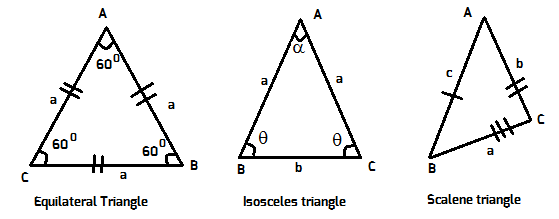Your teacher made 8 triangles he need help to identify what type triangles they are. Help him?: 1) #12, 16, 20# 2) #15, 17, 22# 3) #6, 16, 26# 4) #12, 12, 15# 5) #5,12,13# 6) #7,24,25# 7) #8,15,17# 8) #9,40,41#
Let's say your teacher told you that he made the 8 triangles but he does not know what type triangles they are. Can you help him identify what type of triangles she made:
1) #12, 16, 20#
2) #15, 17, 22#
3) #6, 16, 26#
4) #12, 12, 15#
5) #5,12,13#
6) #7,24,25#
7) #8,15,17#
8) #9,40,41#
Let's say your teacher told you that he made the 8 triangles but he does not know what type triangles they are. Can you help him identify what type of triangles she made:
1)
2)
3)
4)
5)
6)
7)
8)
2 Answers
According to Pythagoras theorem we have the following relation for a right angled triangle.
This relation holds good for
triangles
They are also Scalene Triangle as their three sides are unequal in length.
~~~~~~~~~~~~~~~~~~~~~~~~~~~~~~~~
~~~~~~~~~~~~~~~~~~~~~~~~~~~~~~~~
1)
2)
3)
4)
5)
6)
7)
8)
Explanation:
From a theorem we know that
The sum of the lengths of any two sides of a triangle must be greater than the third side. If this is not true, triangle does not exist.
We test the given set of values in each instance and notice that in case of
3)
To identify different types of triangles either by way of given lengths of its sides or measure of its three angles is shown below:

In the problem three sides of each triangle are given. As such we will identify these by sides.
1)
2)
3)
4)
5)
6)
7)
8)
There is a fourth category of triangles in which one of interior angles is of
It is called right triangle.

It can be either be Scalene or Isosceles.
We know from Pythagoras theorem that for a right triangle
Square of largest side
Now testing sides of each triangle
1)
2)
4)
5)
6)
7)
8)
Combining three steps we state the answer.

